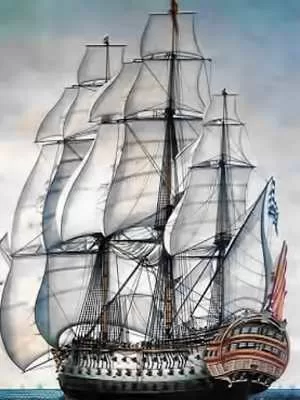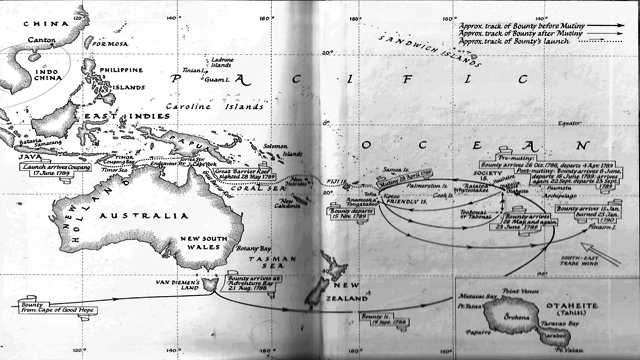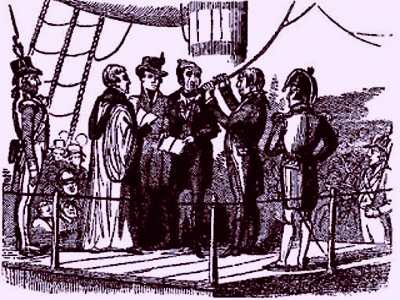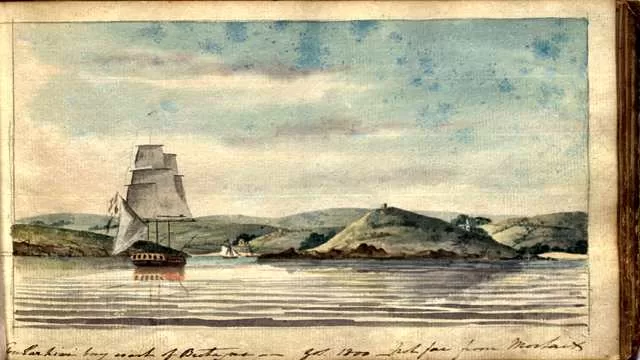The Court-Martial of William Bligh: A Historic Naval Inquiry
In the fall of 1790, the naval world turned its eyes to Spithead, where the court-martial of Lieutenant William Bligh unfolded aboard the Royal William. The case was not just about a mutiny but also a test of whether Bligh and his officers had resisted the takeover of HMS Bounty with enough force.
The stakes were high, as nineteen men had been subdued by twenty-five mutineers led by Fletcher Christian. The trial aimed to assess the actions of Bligh and his loyalists, seeking to understand if they had done everything possible to prevent the mutiny.
Testimonies and Tensions: The Courtroom Drama
The court-martial proceedings began on October 22, 1790. Bligh, known for his stern leadership, faced intense scrutiny. However, his officers supported his account, painting a picture of a crew overwhelmed by mutineers rather than a failure in leadership. William Purcell, the ship’s carpenter, was the only officer against whom Bligh held grievances, citing his quarrelsome nature. Despite this, Bligh refrained from laying serious charges against Purcell, showing a level of restraint that surprised many.

The court, after careful deliberation, concluded that the Bounty had been “violently and forceably taken” by Christian and his followers. The verdict cleared Bligh, his officers, and the loyal crew members of any wrongdoing. This ruling not only vindicated Bligh but also set the stage for his subsequent promotion to captain.
Second Voyage: Redemption and Success
In April 1791, Bligh received orders for a second mission to transport breadfruit from Tahiti to the West Indies. This time, the mission was meticulously planned, avoiding the perilous Cape Horn route. The three-decked frigate Providence, accompanied by the brig Assistant, set sail in August 1791 with a full complement of officers and twenty marines.

Bligh’s command was exemplary. The voyage went smoothly, and by April 1792, the crew had successfully loaded the breadfruit plants in Tahiti. The journey continued without incident, and by January 1793, Bligh and his crew arrived in the West Indies, delivering the breadfruit to St. Vincent and Jamaica. The plants were also brought back to London, where they were given to Sir Joseph Banks and the Gardens at Kew. Upon his return to Deptford in August 1793, Bligh was met with acclaim, marking a stark contrast to the earlier mutiny.
Pandora’s Fate: Another Court-Martial
Parallel to Bligh’s success was the fate of Captain Edward Edwards, who faced his court-martial just days before the trial of the Bounty mutineers. Edwards had been in command of HMS Pandora, tasked with capturing the Bounty mutineers. The ship met a tragic end, sinking during its mission. However, Edwards and his officers were acquitted, their accounts deemed truthful and their actions justified.
Mutineers’ Trial: Justice Served
The trial of the Bounty mutineers began on September 12, 1792, aboard the Duke. Ten men, including those captured by Edwards on the Pandora, faced the Judge Advocate Greetham and his court. After days of testimonies, the court reached its verdict. Four men—Charles Norman, Thomas McIntosh, Joseph Coleman, and Michael Byrn—were acquitted, having been identified by Bligh as loyalists during the mutiny. They were immediately released.

However, the remaining six men were found guilty. While Peter Heywood and James Morrison were recommended for mercy and spared from execution, the fate of William Muspratt was more complex. He appealed his sentence on a technicality and was eventually pardoned in February 1793. The three others—John Millward, Thomas Burkett, and Thomas Ellison—were not so fortunate. On October 29, 1792, they were hanged from the yardarms of the Brunswick, a grim reminder of the consequences of mutiny.
The Breadfruit’s Legacy: A Disappointing End
Ironically, the breadfruit plants, the focal point of both Bligh’s missions, were not well-received by the slaves in the West Indies for whom they were intended. The slaves refused to eat the breadfruit, leaving Bligh’s arduous efforts largely in vain. Despite the successful transport of the plants, their intended purpose was never fully realized, adding a layer of futility to the entire endeavor.
Conclusion
The court-martial of William Bligh and the subsequent trials of the mutineers highlight the complexities of naval life in the 18th century. Bligh’s character, often depicted as harsh and authoritarian, is also marked by moments of restraint and dedication. His successful second mission contrasts sharply with the tragic fates of the mutineers, showcasing the thin line between loyalty and rebellion.
Bligh’s legacy, though forever intertwined with the infamous mutiny on the Bounty, also includes his redemption through the successful completion of his second mission. The trials and tribulations of this period offer a glimpse into the challenges of command and the consequences of defiance, leaving a lasting impact on maritime history.

